As we left the Imjingak area I took a rather serendipitous opportunity to deal with a nasty little issue that had arisen just prior to leaving Melbourne. With only days left in Australia the water pump had failed ( camper water pump, not van engine water pump ). No time to deal with it there and we could get by on bottled water short term, but knowing we needed a long term solution I purchased a new one while in Canada and brought it with us to Korea. I had the presence of mind to bring all the small imperial measure fittings that might also be needed, but forgot that I would need a drill to remount the replacement unit. Where to rent a drill in Korea ? Fortunately, as I knocked on the front door of the first “campground” we were to stay at, I noticed the owner had (sitting right there on a nearby counter ) just what I needed! The inclusion of a loaned power drill made the steep campground fee bearable and within a few hours I had the old pump removed and the new one installed – bingo, we had running water again. Pure bliss, and a good start to another week in Korea.
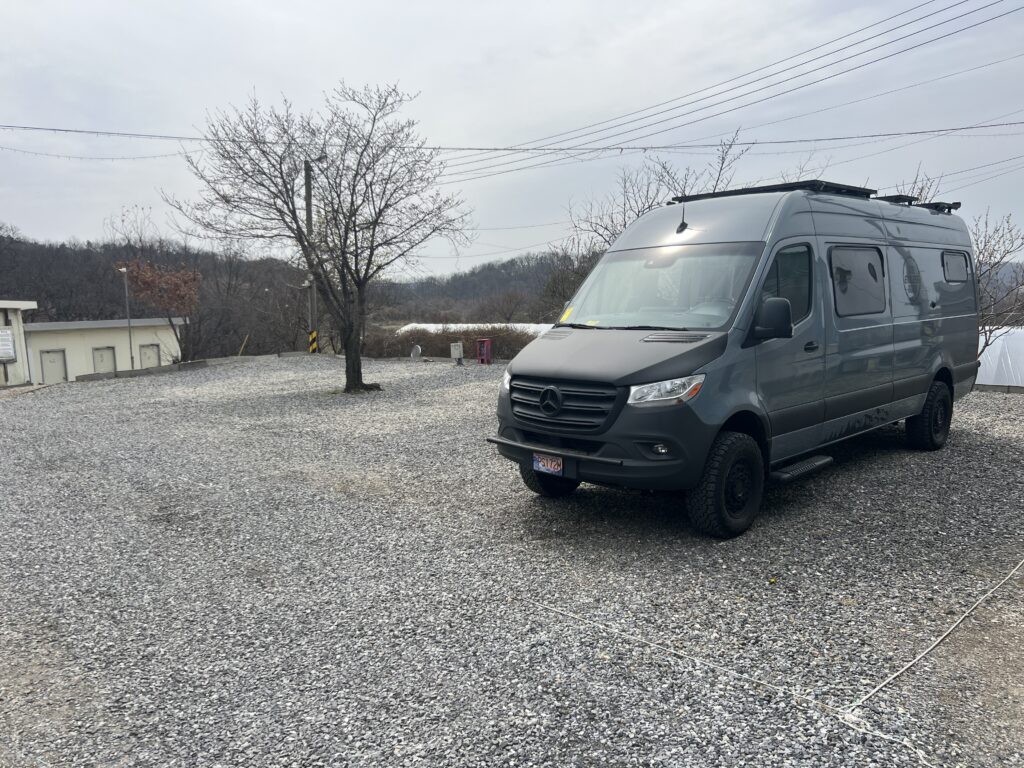
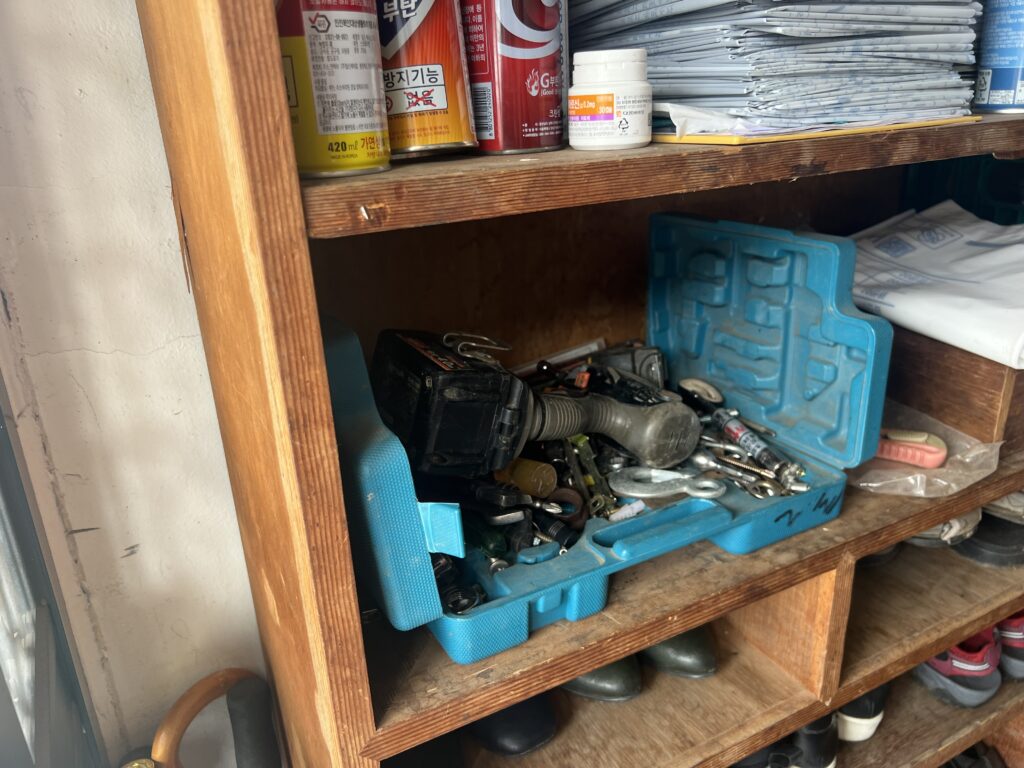
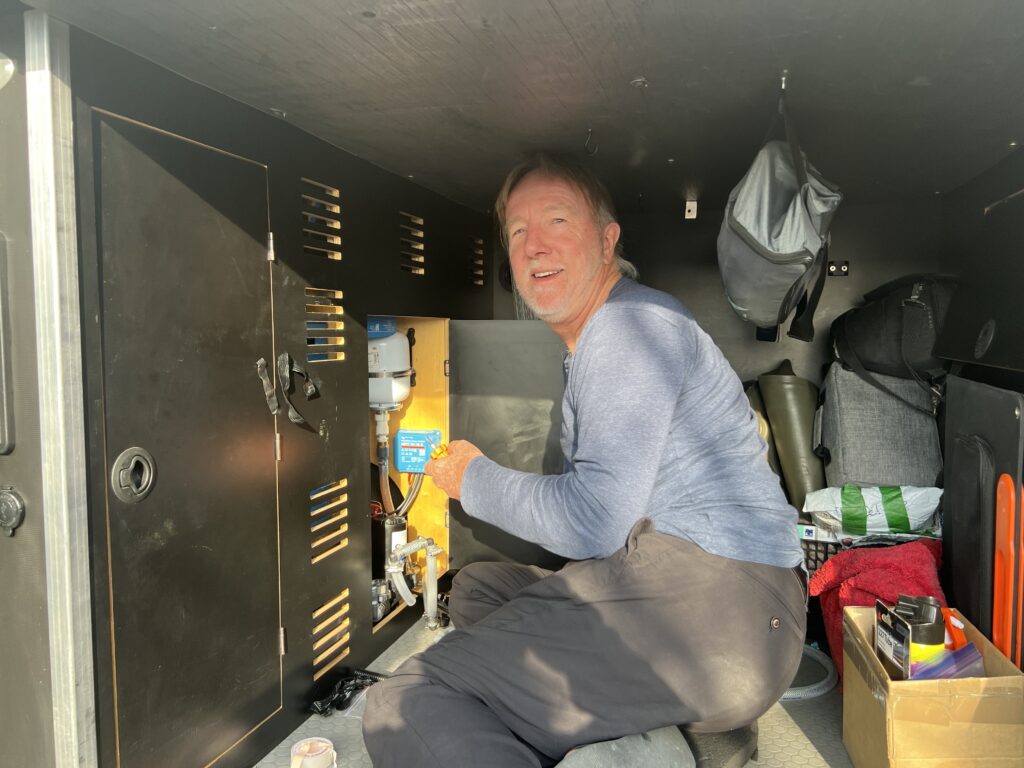
Folly that we might think just by leaving the Imjingak and Gangwha Island area we’d be done with the heavy South Korean military presence. In fact, as we headed east towards Sokcho ( on the coast ) we saw more military vehicles, more military installations, heard more military jets and saw more military “devices” than we had back nearer to Seoul. On reflection, this should not have been surprising. Although only at certain points were we again close to the border with North Korea, there are of course many points along the northern frontier that a possible invasion might come from ( as was seen in 1950 ); to that end the South lives in a state of constant readiness. Troops, both US and ROK, are based in various camps in the area and all civil infrastructure is designed in such a way to quickly thwart the progress of any North Korean aggression – a few images below will explain that ( pretty clever, the South Koreans ! ):
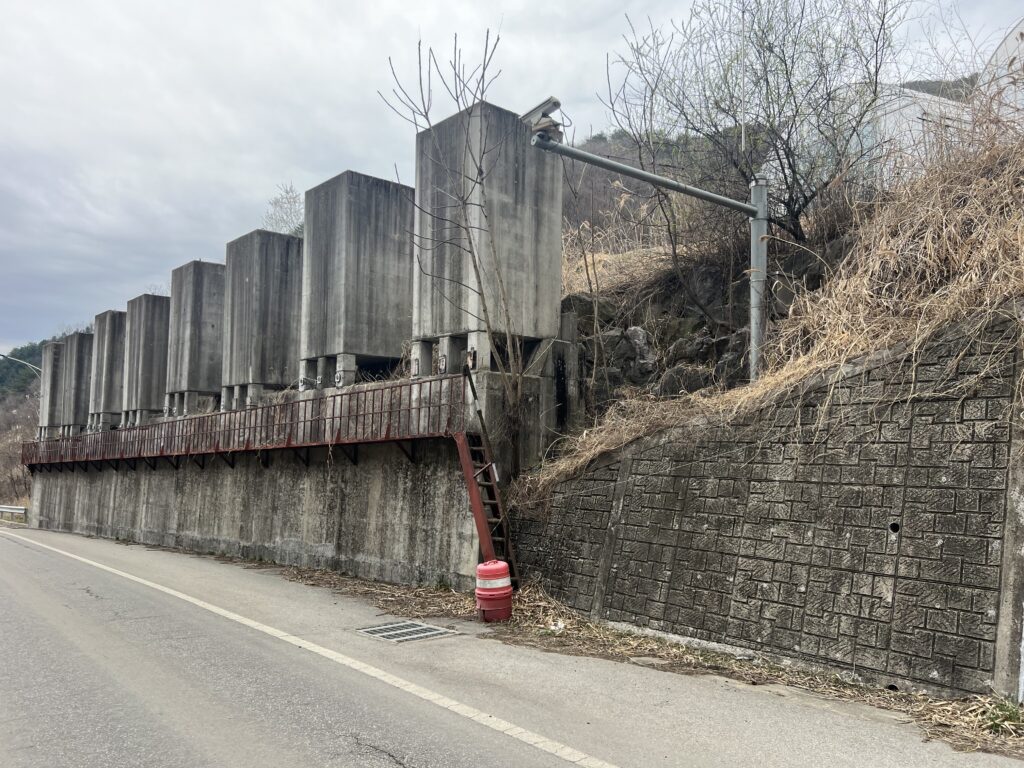
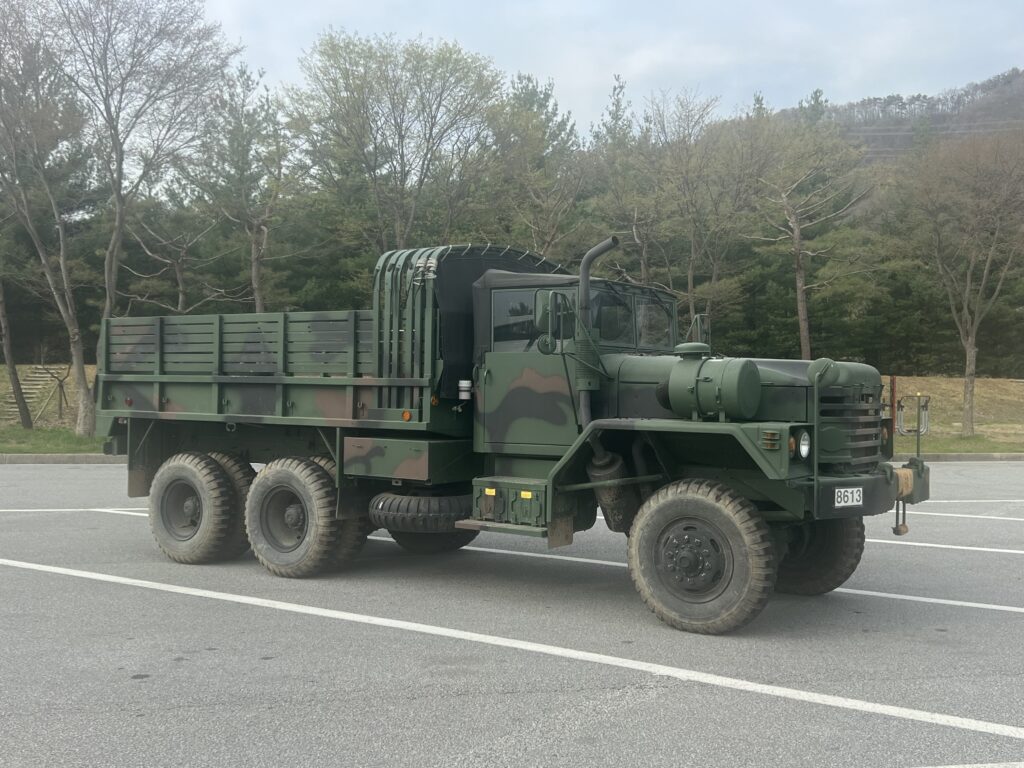
Our travels east took us on a bit of a zig zag route (generally avoiding freeways) through the pretty lakeside city of Chuncheon, Hwacheon, the incredibly circuitous ( but very scenic ) route to the Peace Dam Park and on, eventually, to Soeraksan National Park, our next major destination.
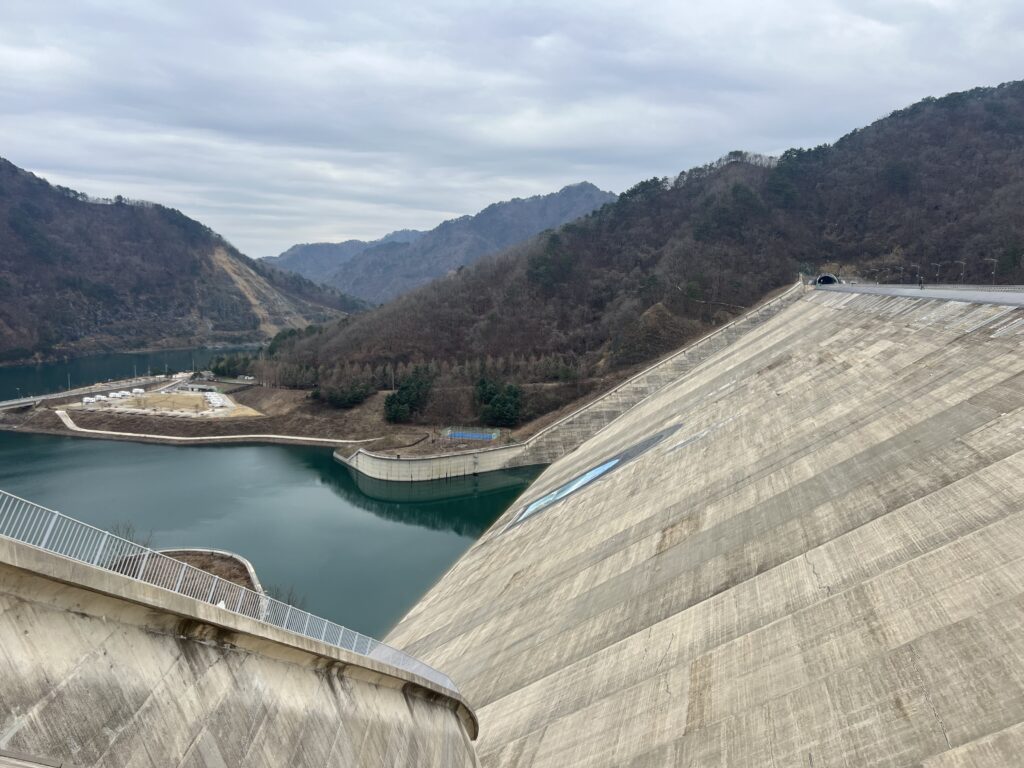
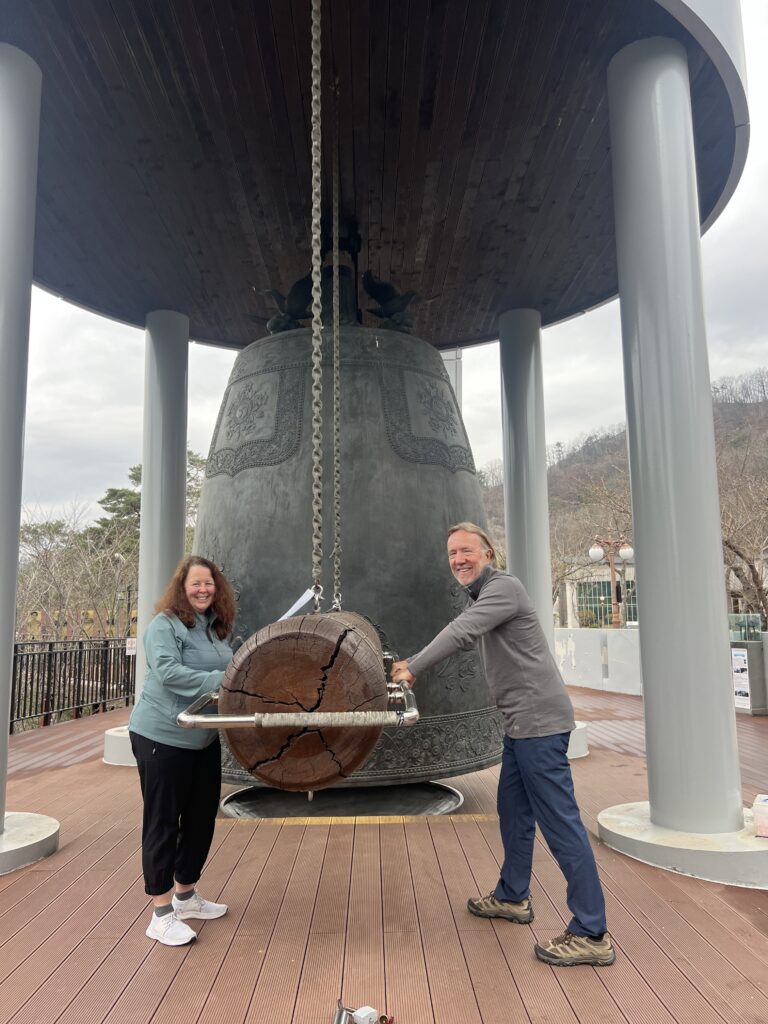
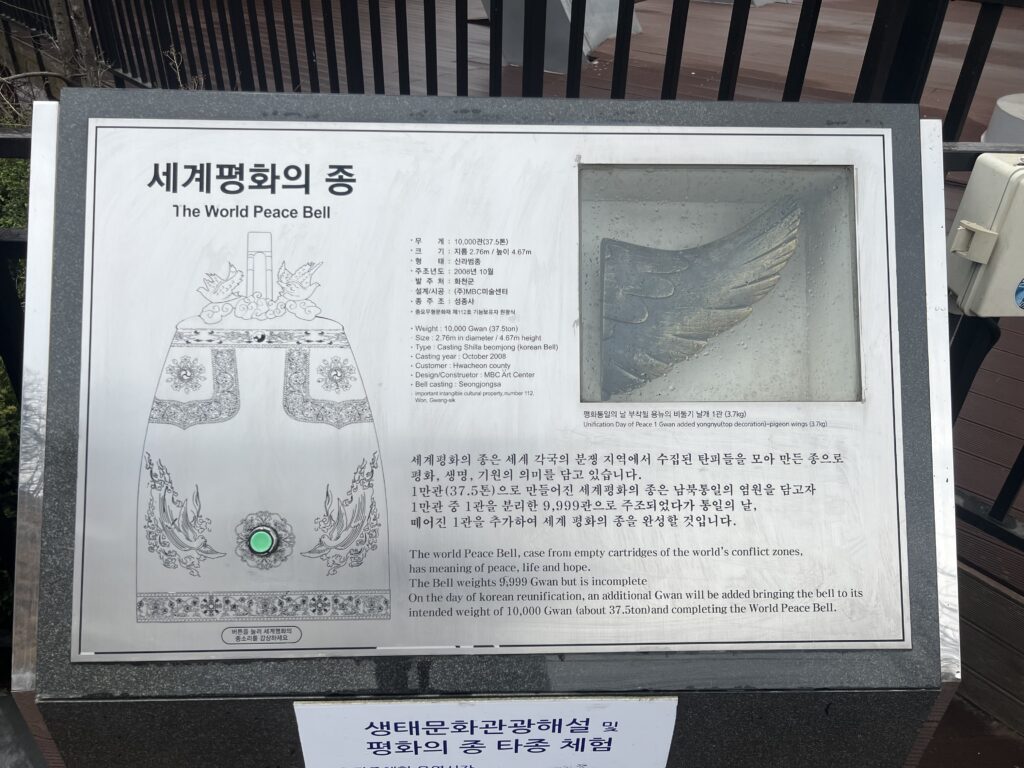
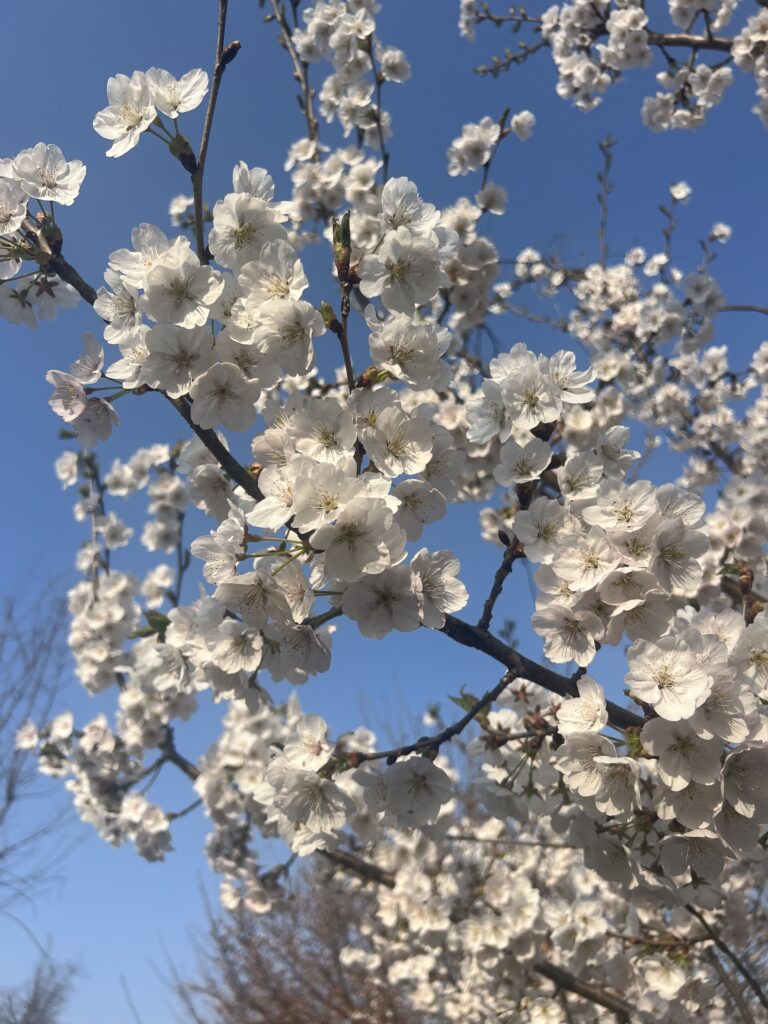
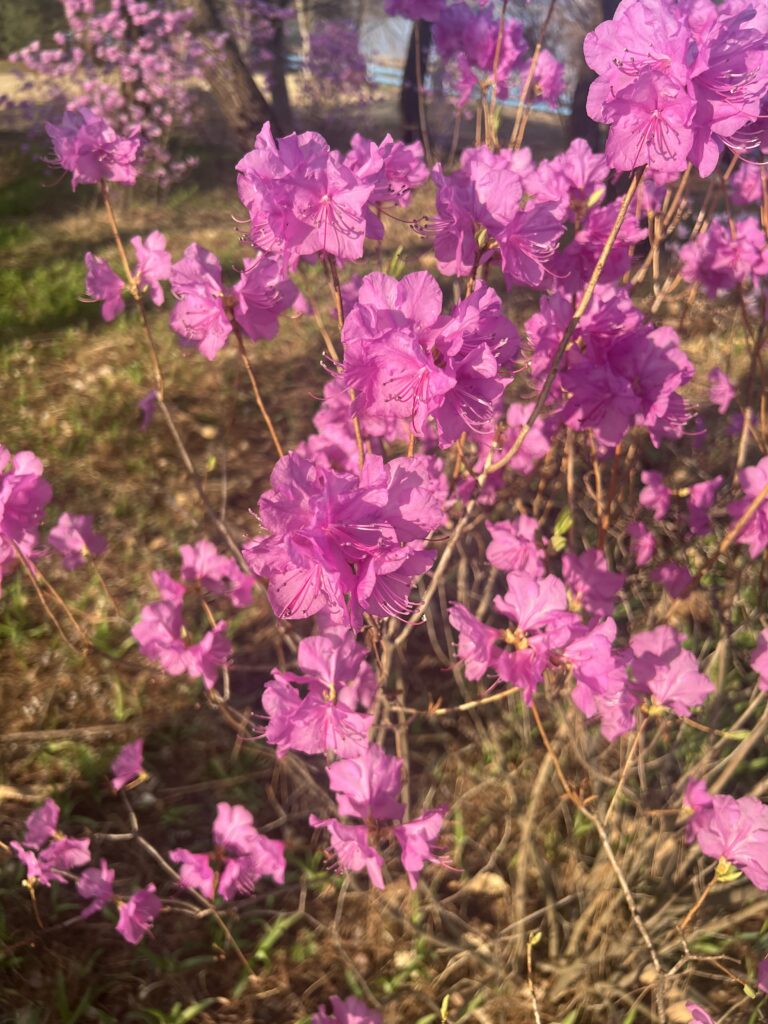
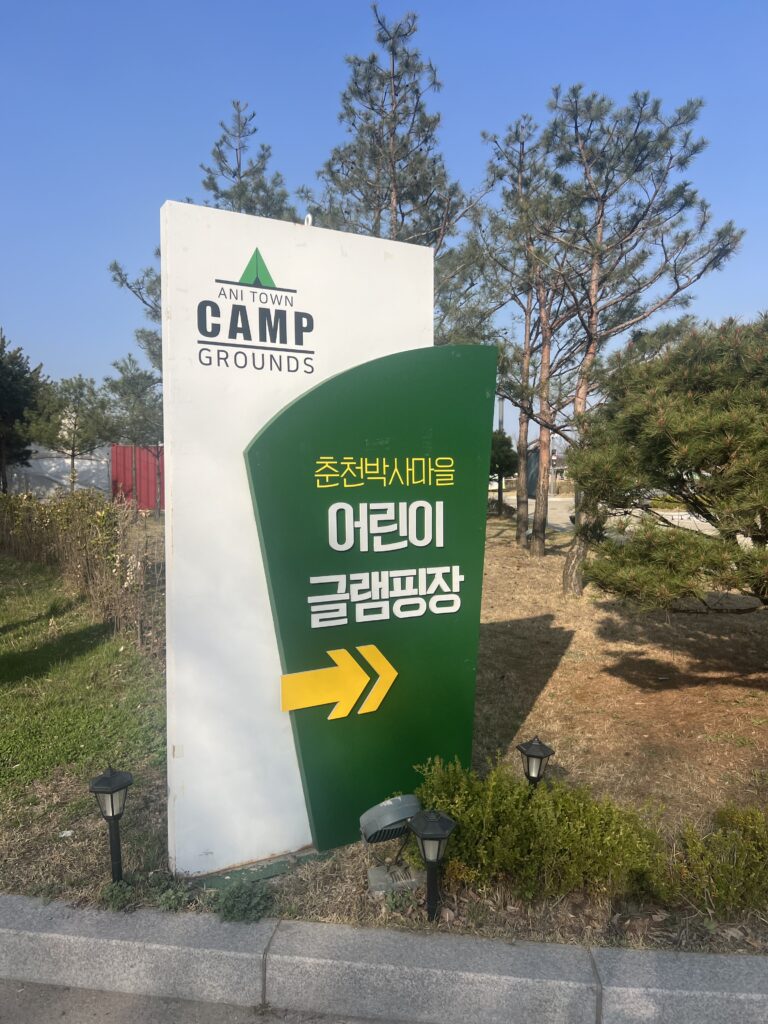
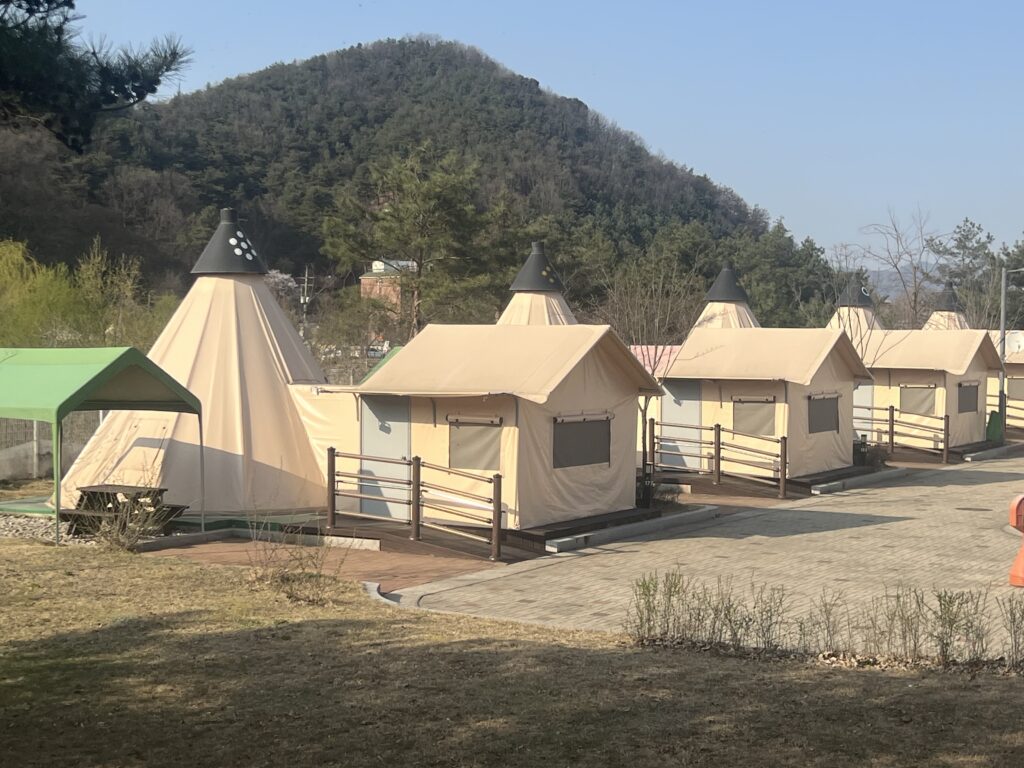
Soeraksan is one of Korea’s top national parks and stunning in its landscape – neither Lois or I expected mountains this high, this rocky, nor ( so late in the year ) to still be snow-capped ! A very pleasant surprise. Sadly, what was not a pleasant surprise were more “Public Alerts” on our phone addressing the poor air quality ( blamed on particulate matter from Chinese factories just across the West sea ) which left otherwise beautiful days with a blue-ish haze; not conducive to good photography, unfortunately. This would follow us for the next few days. We actually spent a couple of nights at Soeraksan and got in some lengthy ( well, lengthy for us ! ) hikes and a spectacular gondola view. Two weeks later and the cherry blossoms would have made it even nicer ( more of that down south we hope ) but we were just a bit early for that this far north and this high.
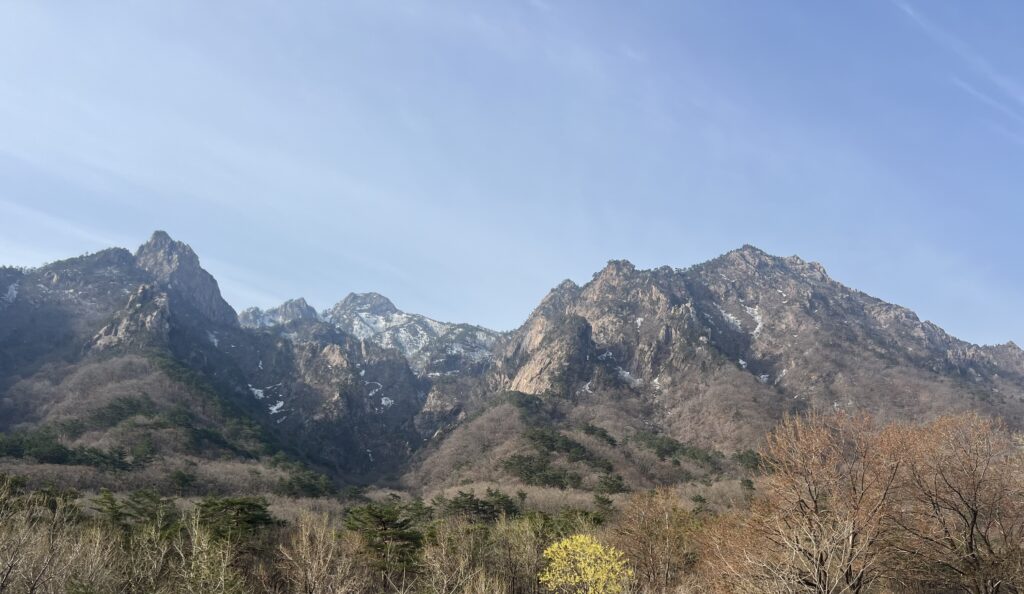
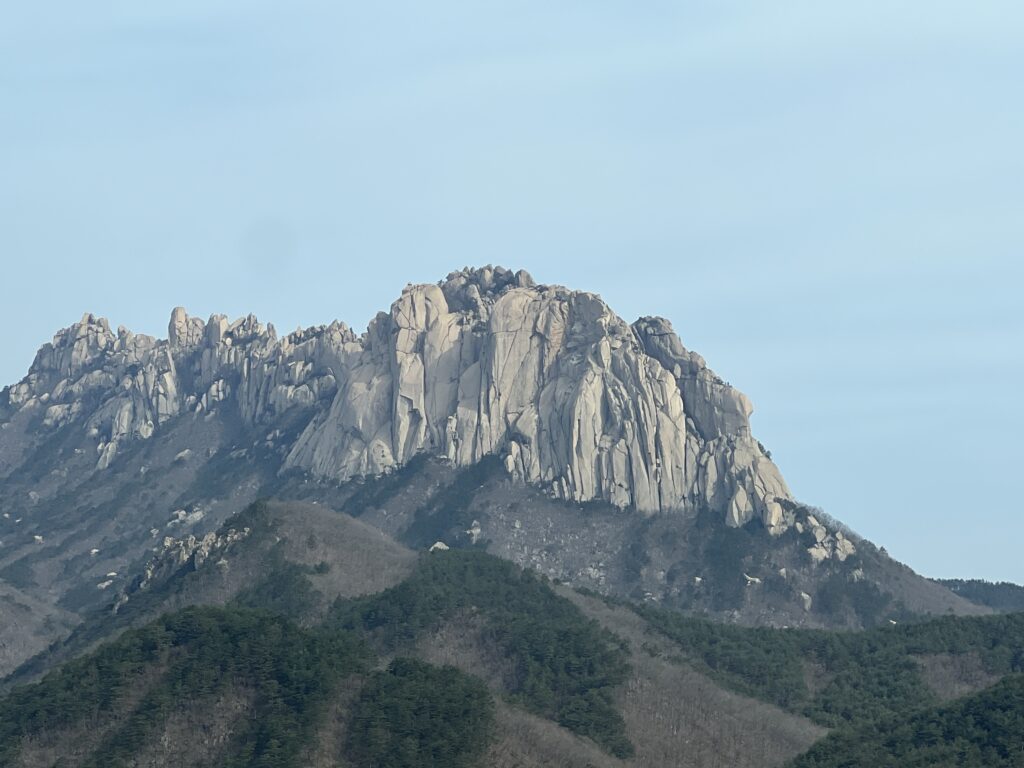
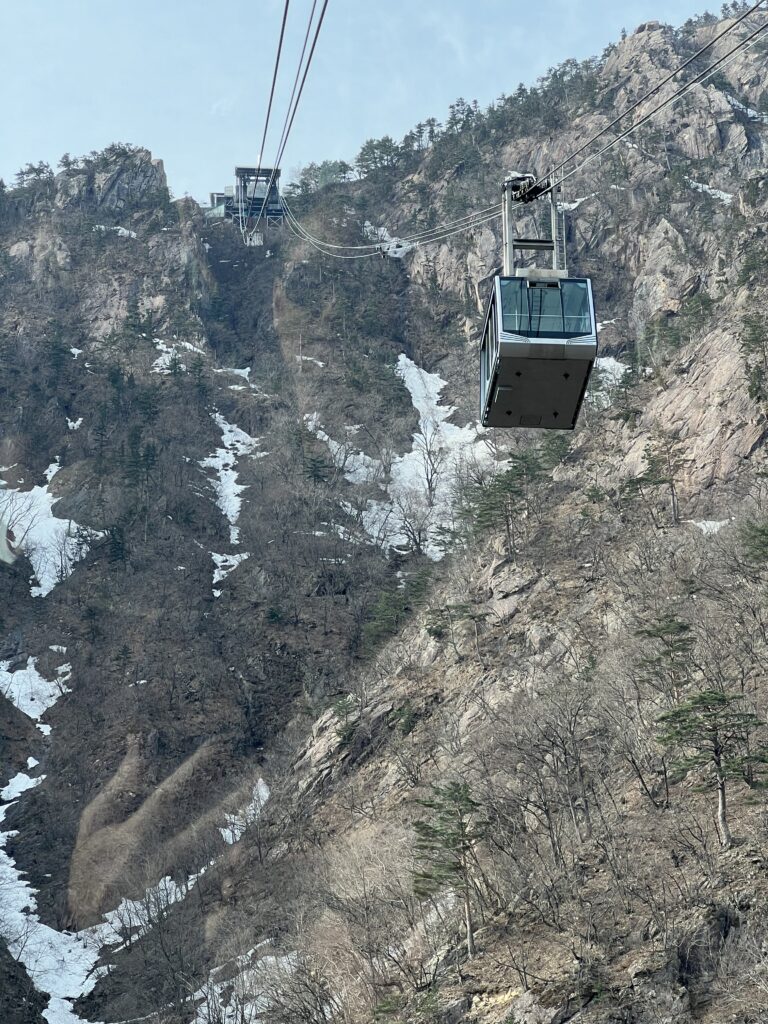
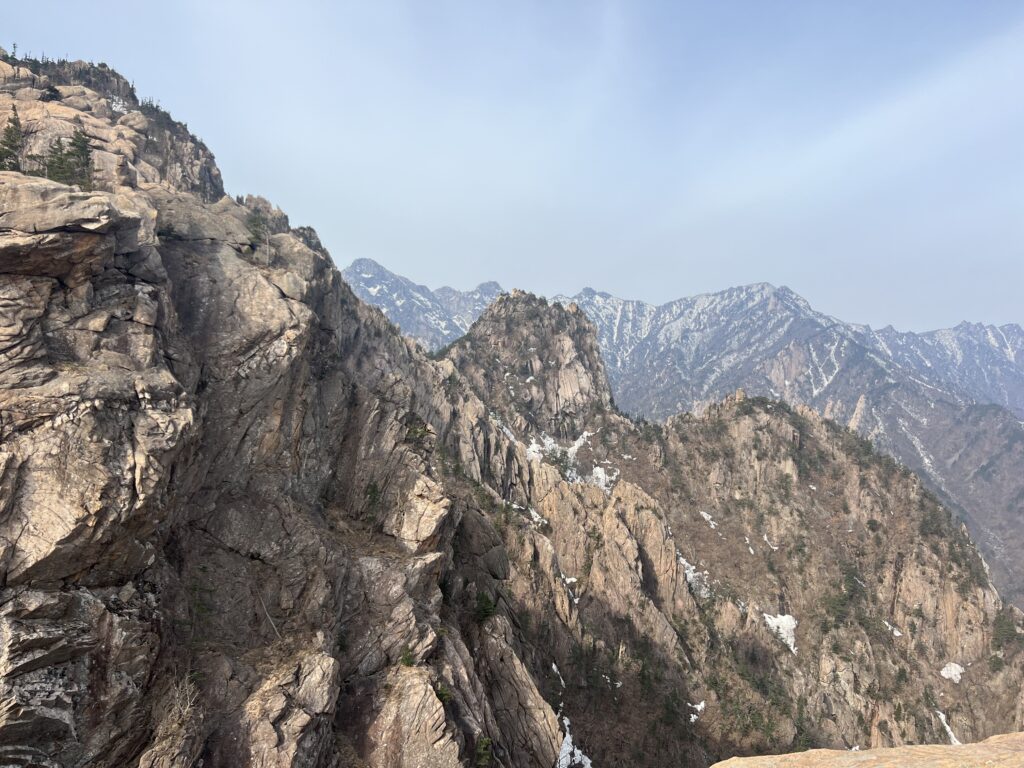
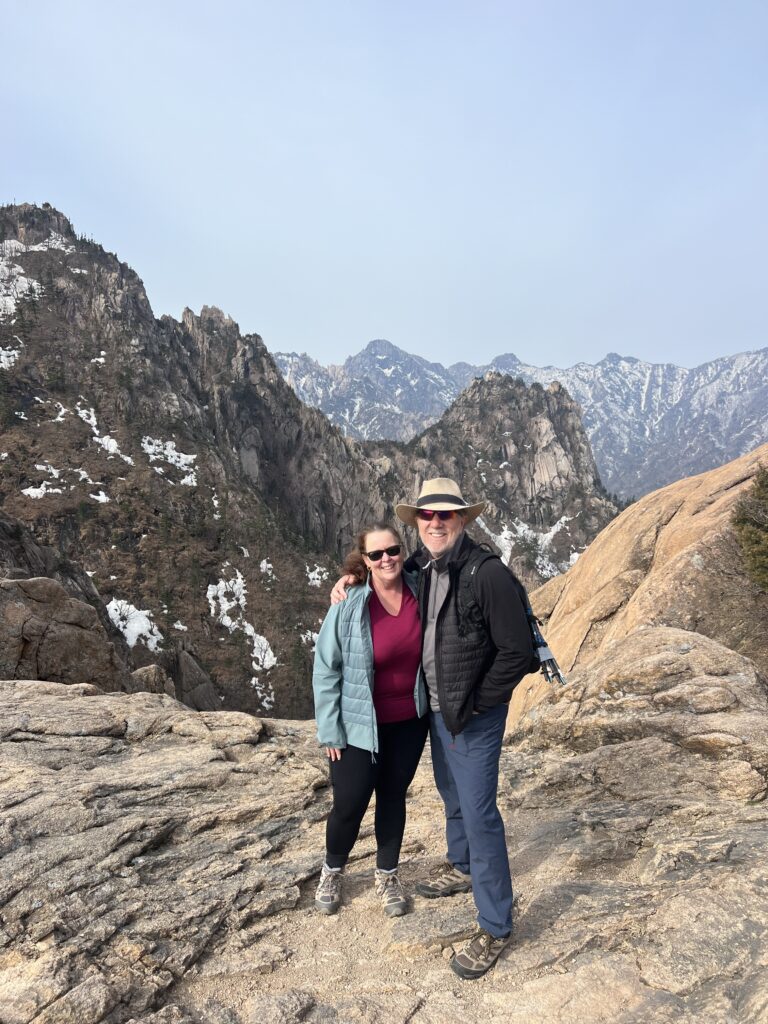
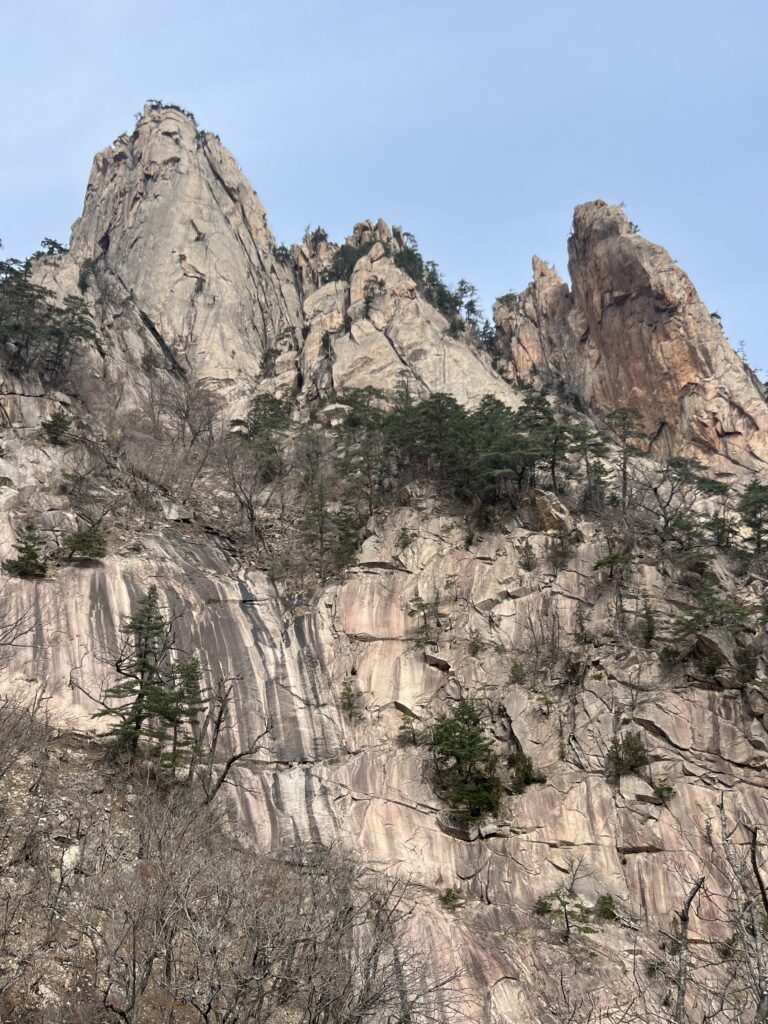
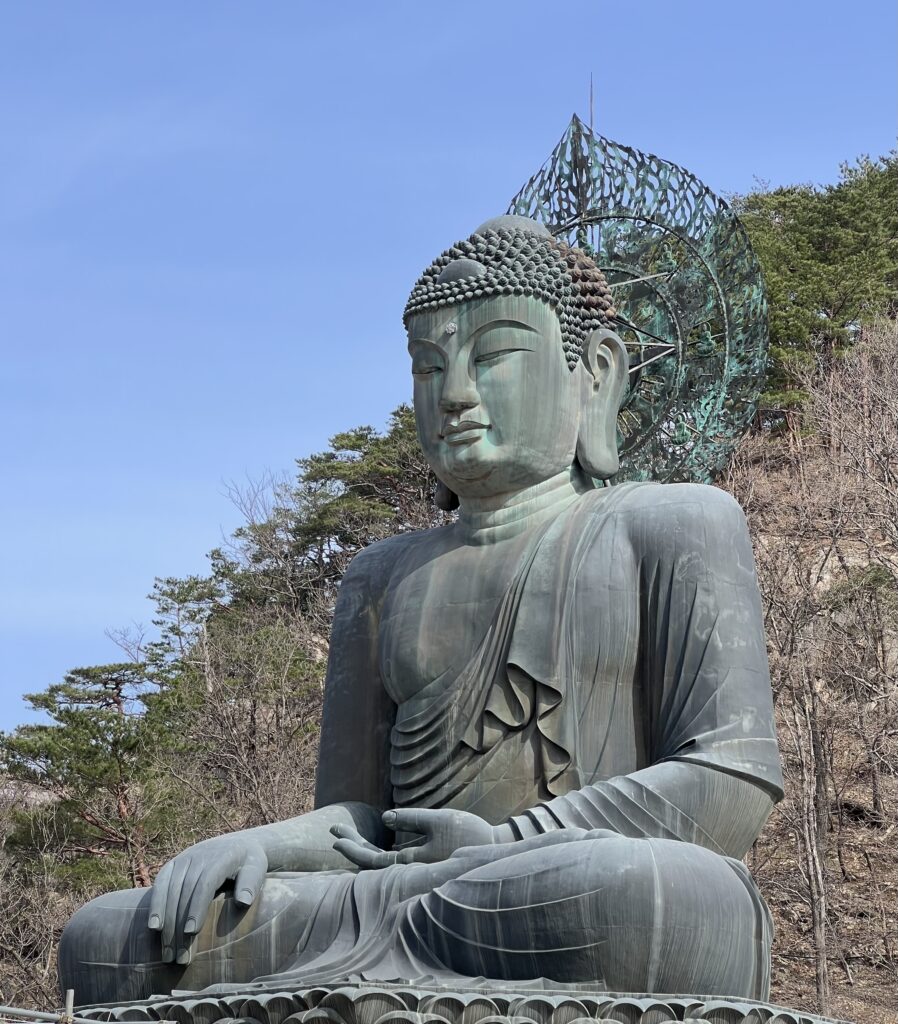
While in the Sokcho/Soeraksan area we had finally made a couple of important ( to us ) discoveries. First, we discovered a Korean laundromat ( we’d been struggling to find one ! ) and second, we realized that “HomePlus” was in fact a giant Korean grocery store ( which we also desperately needed ) and not ( as we had assumed ) a Korean version of Home Depot ( a large North American hardware store ). Now we could both wash our clothes and, finally, stock up on life’s little luxuries. The selections at HomePlus were indeed impressive.
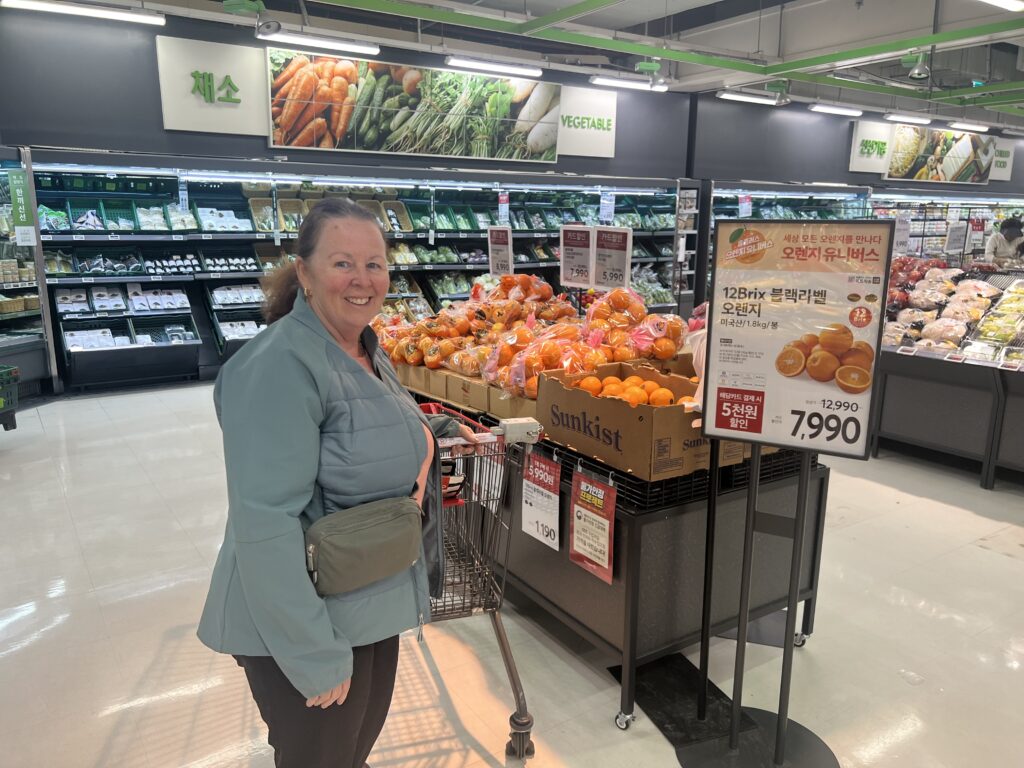
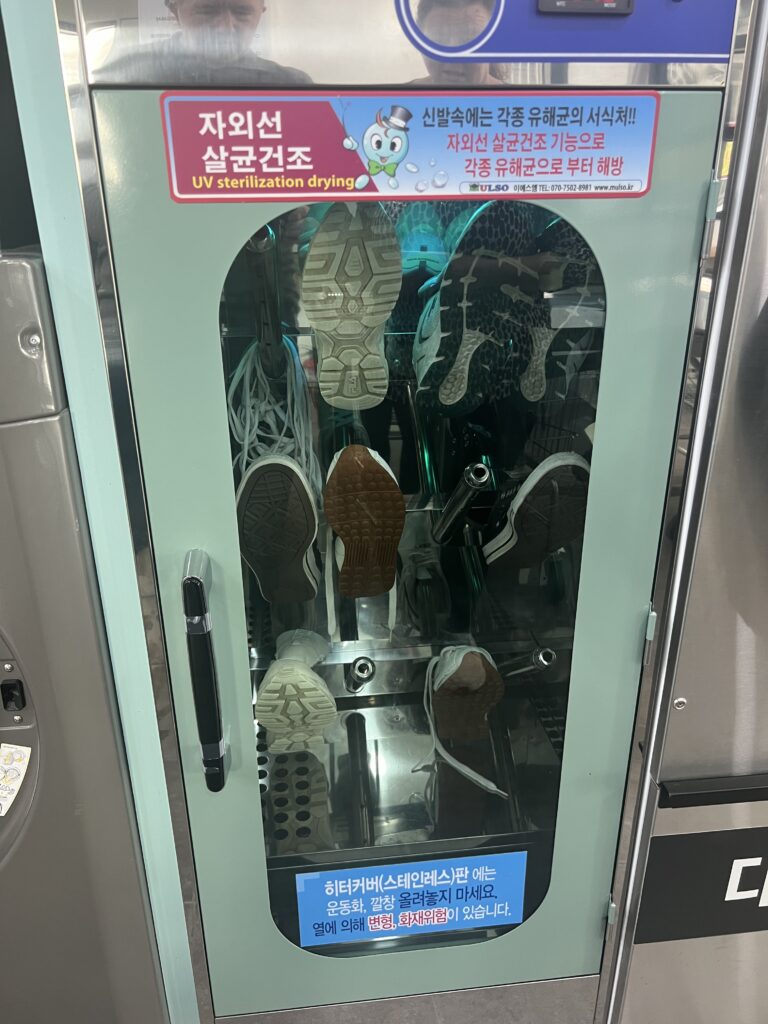
Beyond the attractions up north, there was a geographical gap (further south ) to the next areas of interest to us. Korean’s we’d met encouraged us to fill that with further exploration of more of their excellent National Parks. Beyond Soeraksan we travelled to and hiked in Chiaksan NP, and took a rather twisty, circuitous and very narrow road around Korea’s largest lake, Chungko, which delivered us some of the best cherry blossom viewing on the trip so far.
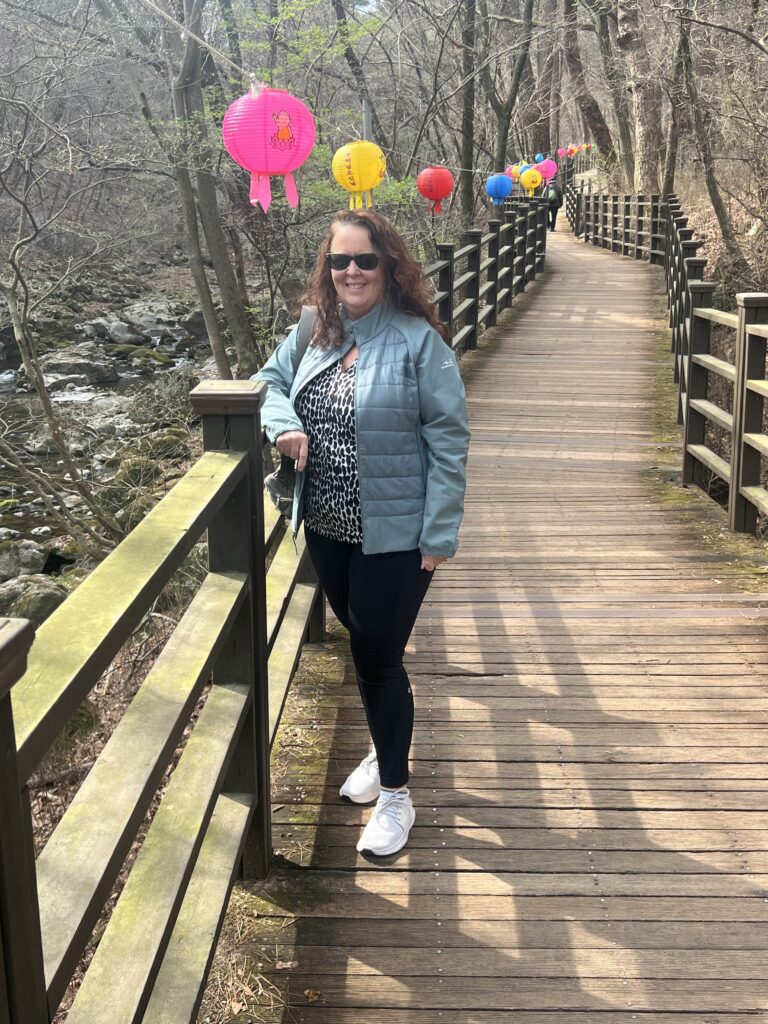
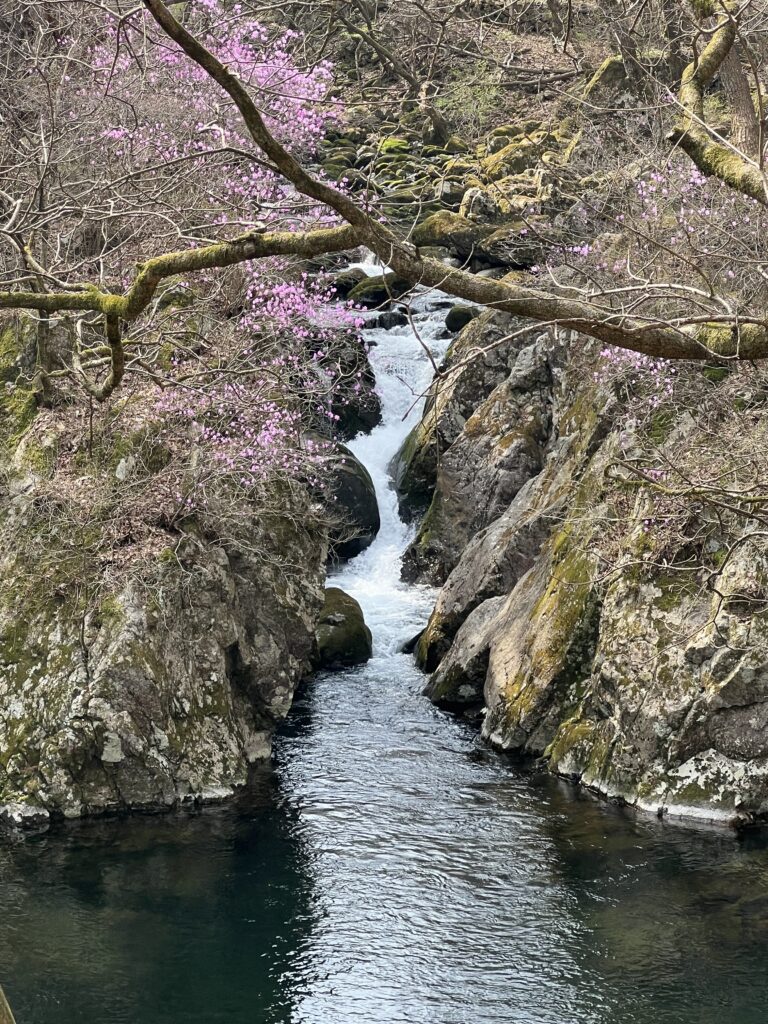
Further south, through Danyang, a popular tourist area for Korean’s, we made a couple of pit stops to check out at least a few of Danyang’s famous “8 views”. These were less than notable, and we were glad we’d not detoured too significantly to take in these “attractions”. If they were a bit underwhelming, the UNESCO recognized Hahoe Folk Village in nearby Andong definitely was not. A very well preserved traditional Korean village with buildings dating to the 1500’s, it was very impressive. Very authentic ( and still lived in ) it was also surrounded by some of the best cherry blossoms we’d seen in Korea so far. Only after we’d almost completed our visit here did we realize that no less than HRH Queen Elizabeth herself had visited in 1999 !
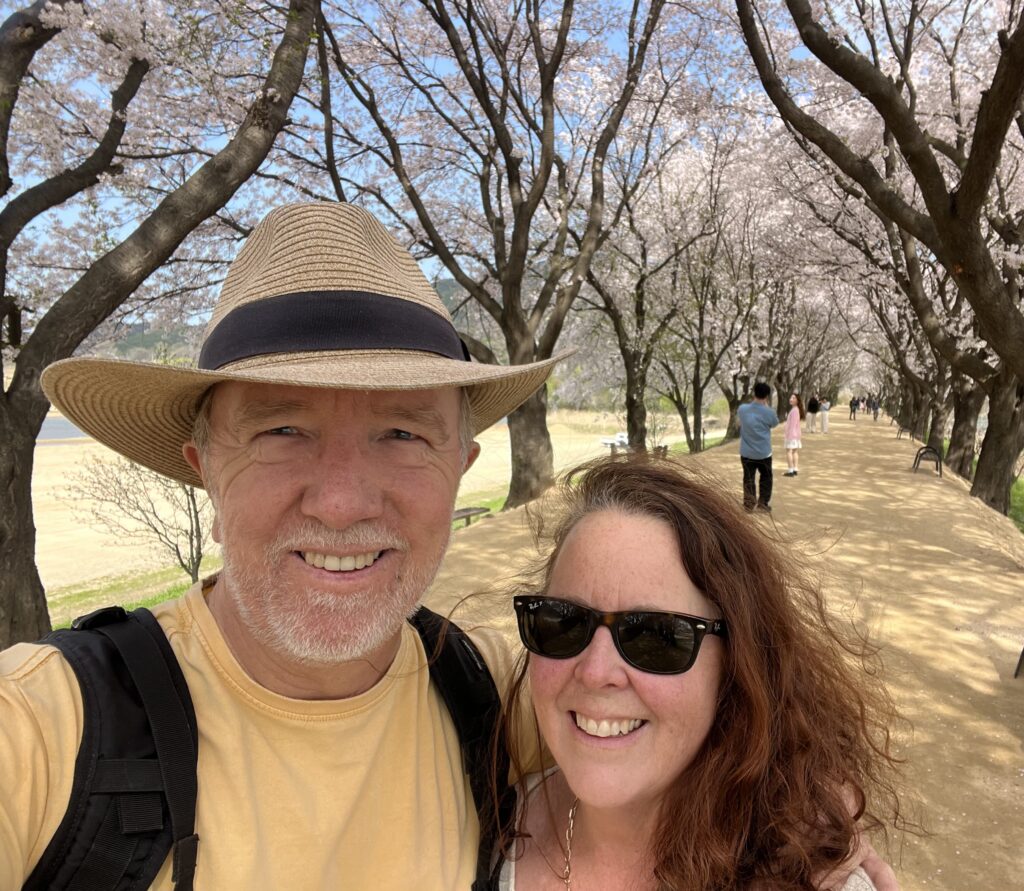
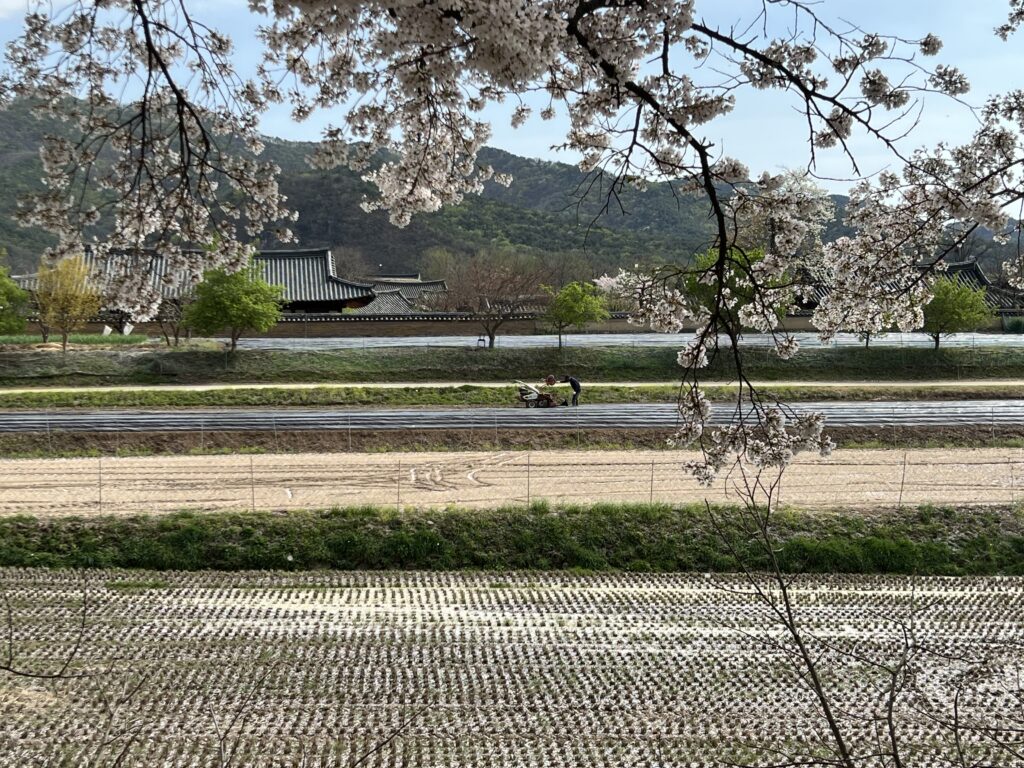
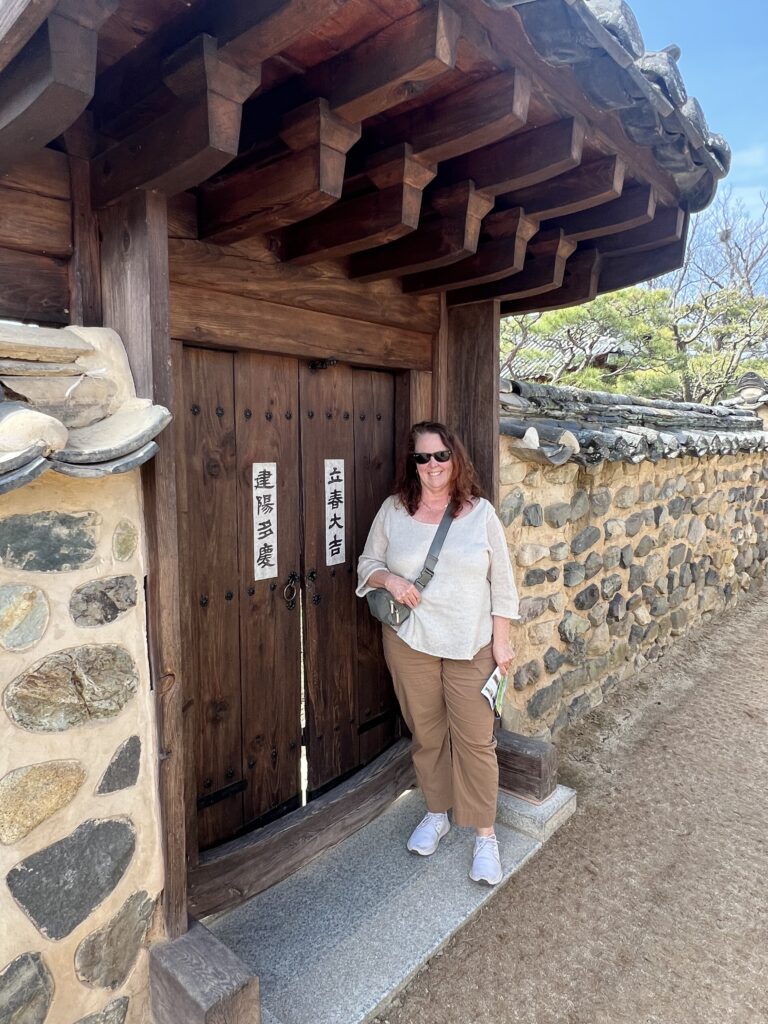
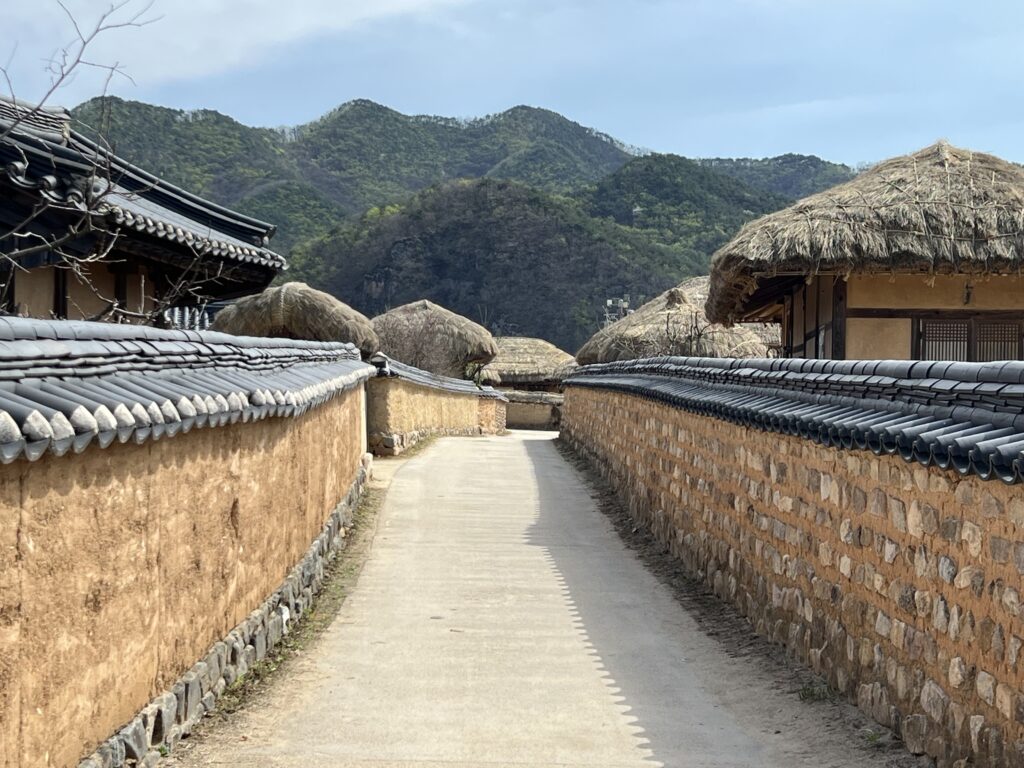
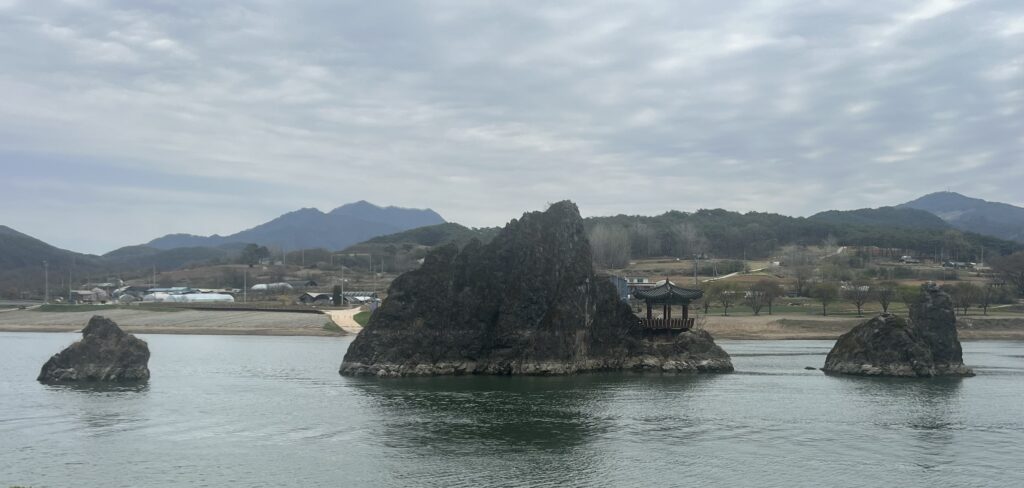
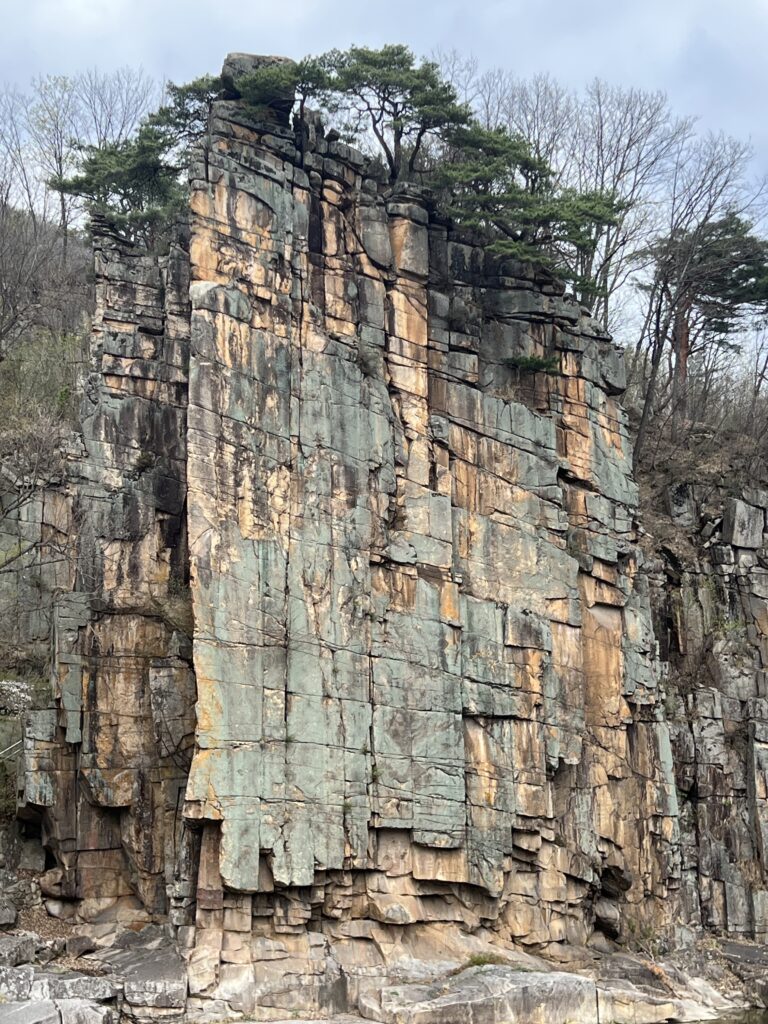
I’ll close with a few important learnings from this past week on the road here ( seems there is some tip or trick we pick up almost every day ! ):
- Expressway rest stops serve two other useful purposes ( in addition to offering fuel): a) a place to get rid of rubbish ( rubbish bins being VERY scarce in Korea ), and b) a place to park up for the night when all else fails ( they’ve saved us once already ! ).
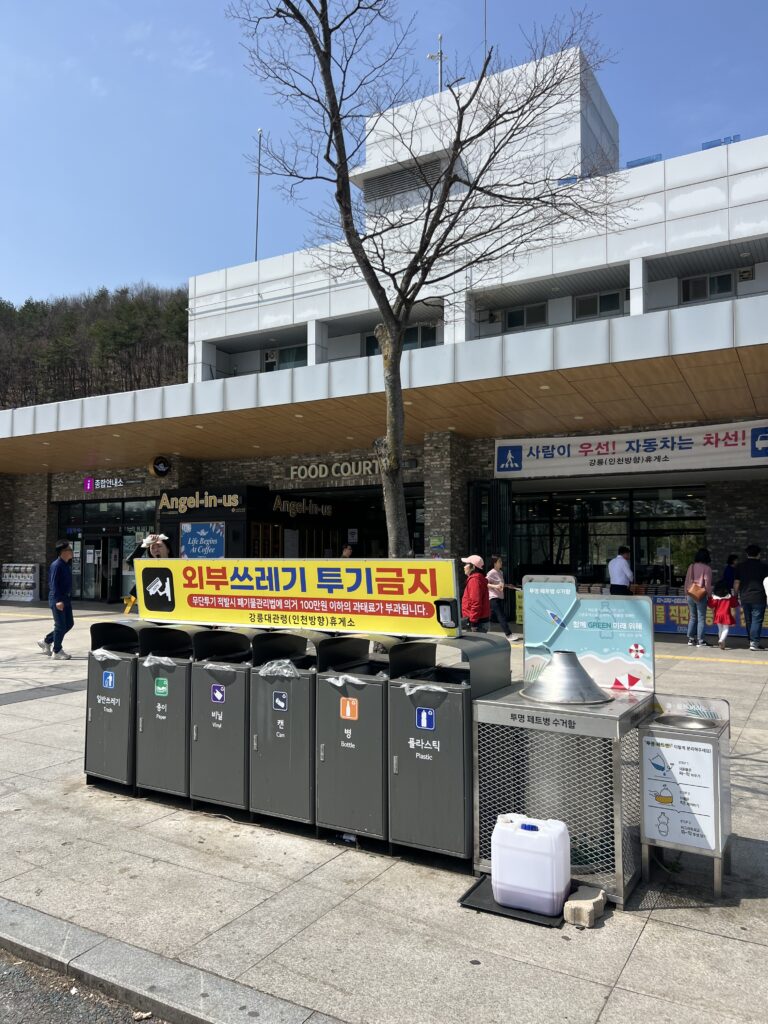
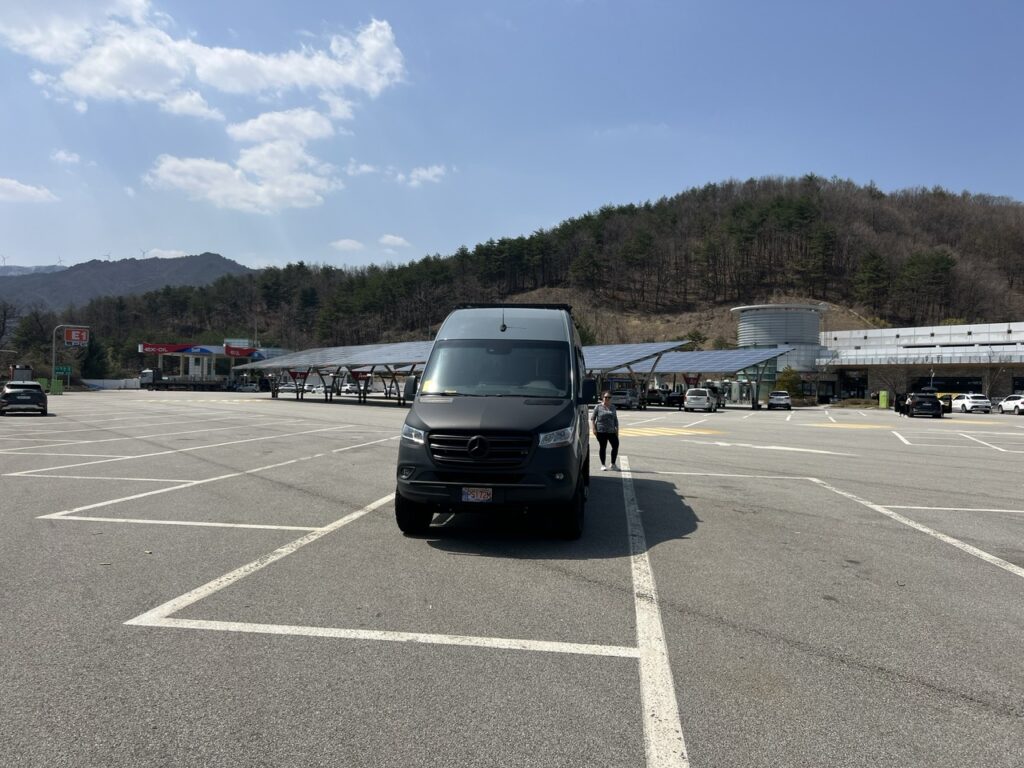
2. The country has more tunnels than any other we have ever visited ( and yes, we’ve been to Switzerland ! )
3. Almost all car washes in Korea are those low clearance automatic ones – we looked long and hard to find a high clearance hand held spray wash ( and still only just made it underneath ). Ten days in the country before we found one like this.
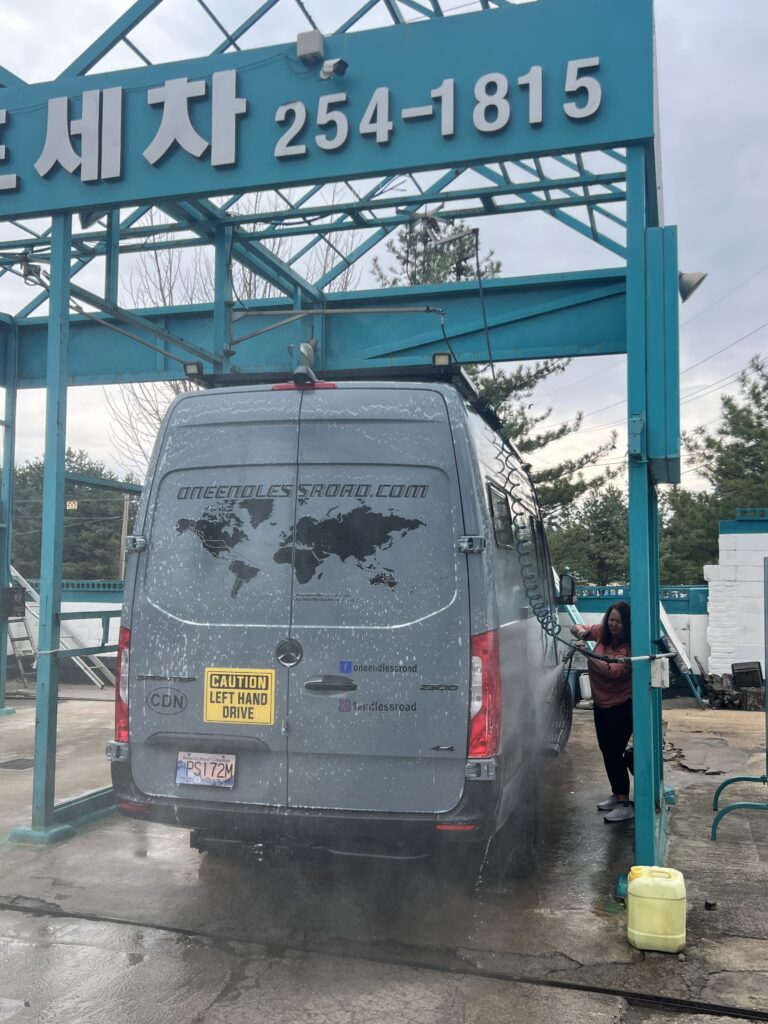
4. We’ve accepted that we’ll never figure out how to get a Korean toll payment machine to accept our credit card ( or even cash ! ). Wait long enough, though and one of these ever helpful toll collectors will come out of the toll booth and help us out !!!!
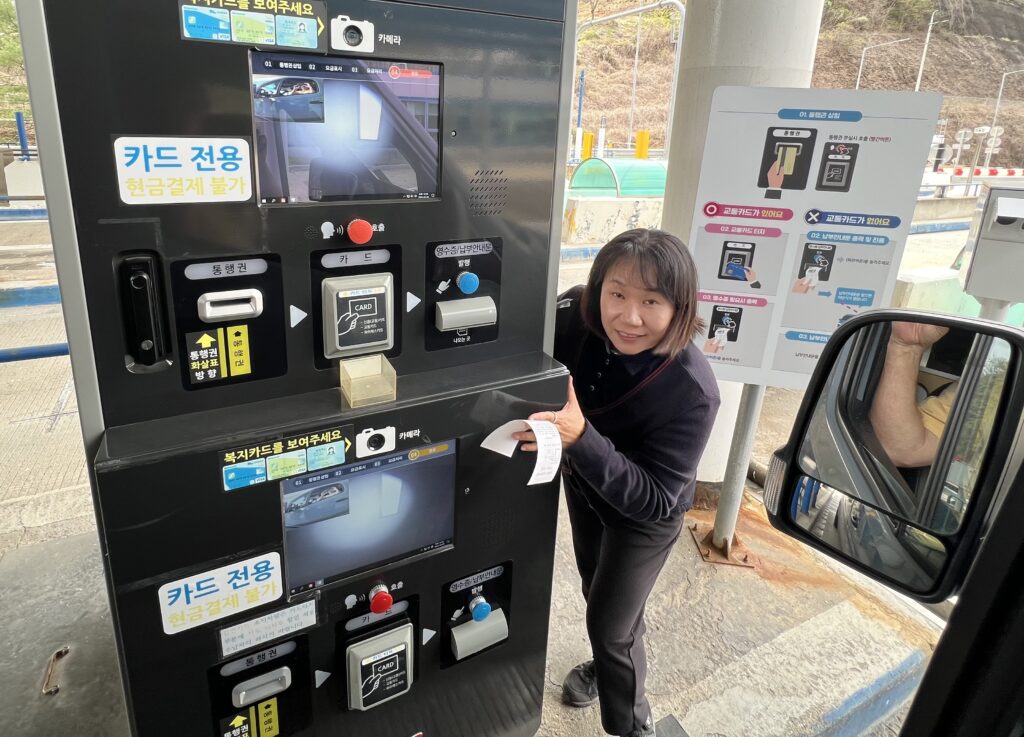
5. And, finally, we realized there ARE other campervans in Korea ( many people had us believe we’d be the only ones ). Here, two others parked beside us at Soeraksan and below a few more we saw free camping in a municipally designated free camping area near Imjingak. That said we’ve yet to meet anyone else who brought their rig in – Lois and I have a bet going, I say we’ll see at least one, she thinks not. Who’ll win….?
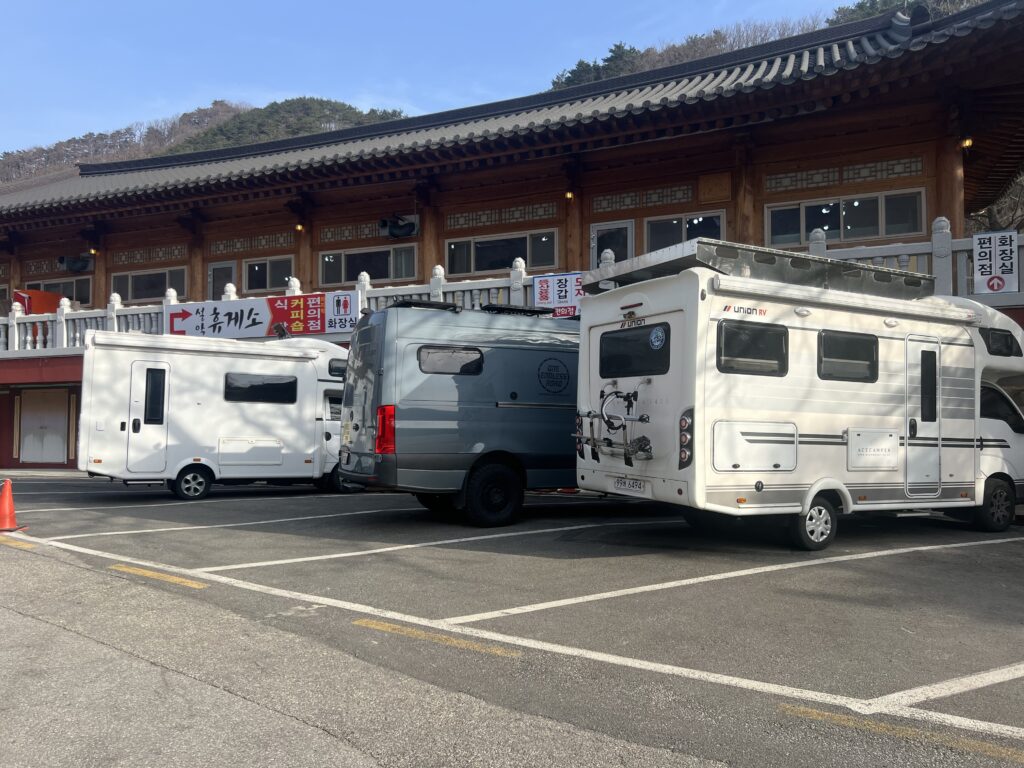
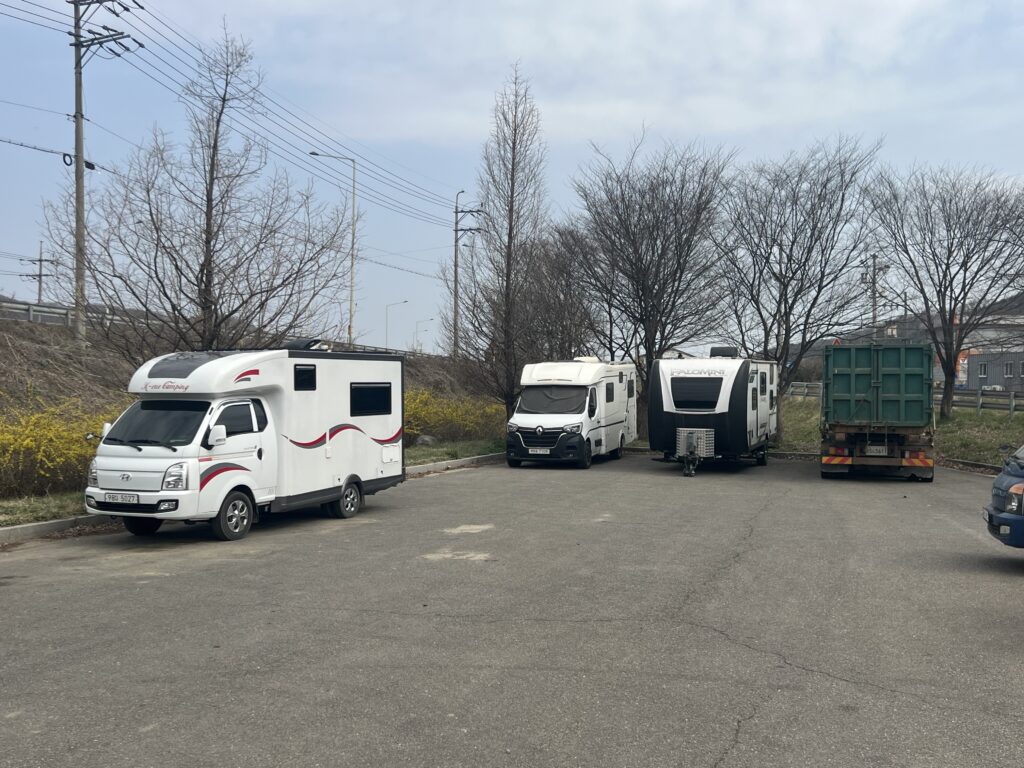
Till next week……..


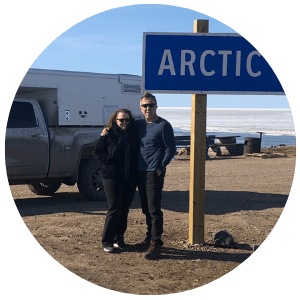
Looks interesting. And cold!
Cold for a few days, but nice after that. At a beach today and went in the water !
Hi,
So fun for you to see those beautiful cherry blossoms. I’m sure that takes you back to living in Japan. Friends are going to Korea next month. I’ll pass your weekly update along.
What a wonderful trip so far!! Looking forward to hearing more!
Thanks Sue, and we look forward to seeing more…!
It really does remind us of our time there, so many similarities. Good nemories!
Still enjoy catching up in Saturday’s. Thank you.
Happy to oblige, Penny, there’s plenty of canvas to paint with here 😊😊
Very beautiful country, unfortunately the air quality is always hazy. Safe travels and enjoy yourselves.
Thanks Phil, and yes after the weeks we have been here now we are beginning to realize it is the norm, not the exception, sadly.